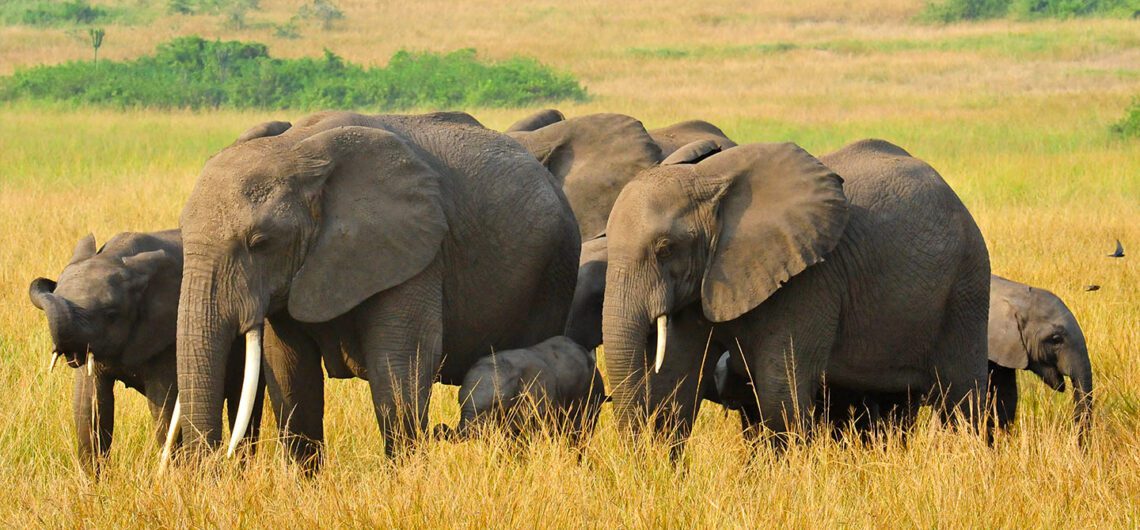The most well-known and frequented wildlife conservation area in Uganda is Queen Elizabeth National Park. The Kamwenge, Rukingiri, Rubirizi, and Kasese districts in western Uganda are where you’ll find the park. The current size of Queen Elizabeth National Park is around 764 square miles. The park is a continuation of Congo’s Virunga National Park and borders Uganda’s Kibale National Park. The park includes the Kyambura Gorge, Maramagambo Forest, Kazinga Channel, and stretches of Lake George and Edward. The park’s original name, Kazinga National Park, was used when it was created in 1952. The government of the day was so moved by the British Queen Elizabeth II’s visit in the early 1950s that a park was named in her honor.
All About Queen Elizabeth National Park
Attractions in Queen Elizabeth National Park
Game Drives:
 This is the most popular activity, allowing you to see 95% of the creatures you would see in the Serengeti while enjoying superior scenery and a setting that encompasses forests, savanna grasslands, marsh regions, acacia trees, crater lakes, gorges, and the adjacent Rwenzori Mountains.
This is the most popular activity, allowing you to see 95% of the creatures you would see in the Serengeti while enjoying superior scenery and a setting that encompasses forests, savanna grasslands, marsh regions, acacia trees, crater lakes, gorges, and the adjacent Rwenzori Mountains.
The early morning 3-4- hour game drives begin to any of the three sectors: Kasenyi Plains (near Kazinga Channel), Ishasha Sector (tree climbing lions), or Katwe Crater Fields. Large craters and salt lakes that were built thousands of years ago can be found in the picturesque crater lakes region.
During the dry season, flamingos, elephant’s flamingos, and other animals are drawn to the water sources on the crater bottoms. In Queen Elizabeth National Park, the northern Kasenyi plains are undoubtedly the most beautiful and ideal locations to see wildlife. Plains are used as a nesting site by Uganda kobs. The plains are also home to other antelope species, buffaloes, elephants, and predators like lions and hyenas, making them an ideal location to observe fights between big cats and herbivorous animals.
Bird watching:
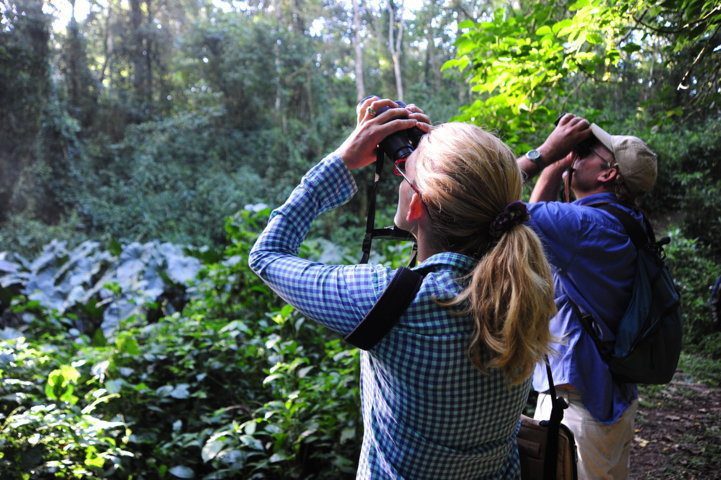 The best place to go birdwatching in Uganda is Queen Elizabeth National Park. The Bird Observatory at Mweya has a complete list of the species that can be seen in the park. Birdwatchers visiting Queen Elizabeth National Park will be astounded by the variety of birds that call Budongo Forest, the Kazinga Channel, the plains, craters, and gorges like Kyambura home.
The best place to go birdwatching in Uganda is Queen Elizabeth National Park. The Bird Observatory at Mweya has a complete list of the species that can be seen in the park. Birdwatchers visiting Queen Elizabeth National Park will be astounded by the variety of birds that call Budongo Forest, the Kazinga Channel, the plains, craters, and gorges like Kyambura home.
Millions of migratory birds arrive throughout specific times of the year to avoid the severe winters in Europe, turning the park into a true birder’s paradise. Yellow-backed, yellow wagtails, Yellow-throated Cuckoos, Yellow-backed Weavers, Wood Sandpipers, Winding and Carruther’s Cisticolas, White-winged Warblers, White-winged Terns, White-tailed Larks, and White-faced Whistlings are just a few of the bird species to keep an eye out for.
Boat Cruise:
 One of the best sites in Africa to see animals is along the Kazinga Channel, where this boat tour is being held. The majority of the park’s animals congregate in this canal, which connects Lake George and Lake Edward, for drinking, hunting, and bathing.
One of the best sites in Africa to see animals is along the Kazinga Channel, where this boat tour is being held. The majority of the park’s animals congregate in this canal, which connects Lake George and Lake Edward, for drinking, hunting, and bathing.
There are more bird species here than in North America during the migration season. Even those who have taken several other safaris will be impressed by the sheer quantity and variety of wildlife along the Kazinga channel.
Elephants, antelopes, and predators such as leopards drink water in the shallow ends of the canal while hippos, water fowl, and crocodiles rule the surrounding waters. Tourists get their tickets for this event from the Visitor Information Centre in Mweya.
Spot Tree Climbing Lions:
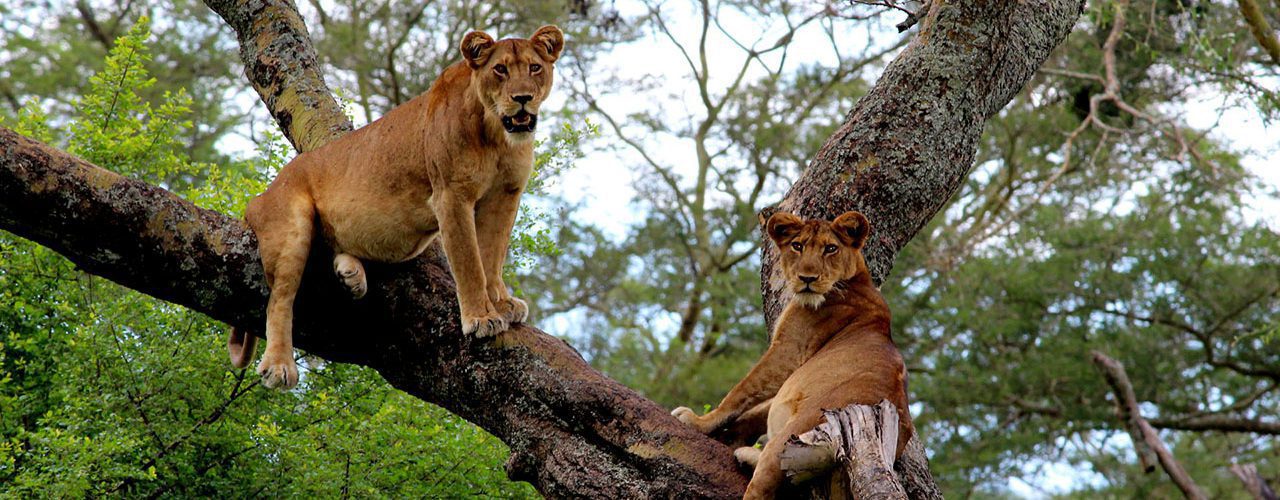 The rare tree climbing lions can be found in the Ishash region of the Queen Elizabeth national park. They do not belong to a distinct subspecies or are in any way distinct from the lions that may be seen in Kasenyi Sector or other national parks in Uganda.
The rare tree climbing lions can be found in the Ishash region of the Queen Elizabeth national park. They do not belong to a distinct subspecies or are in any way distinct from the lions that may be seen in Kasenyi Sector or other national parks in Uganda.
The lions in this area have naturally adapted to a life spent climbing the abundant fig trees after morning or afternoon hunts. There are ideas that these lions ascend up trees because of insects and parasites (such Tsetse flies) on the ground, but scientists have not yet come up with a good explanation for why they do so.
To see the lions perched on the branches, game drives are scheduled in the Ishasha area. The Ishasha area is home to elephants, warthogs, and buffalo in addition to lions. The Ishasha sector is a great place to stop for visitors planning to visit the lions and gorillas in Bwindi Impenetrable Forest National Park because it is close to the highway that leads to Bwindi.
Chimpanzee Trekking at the Kayambura Gorge Queen Elizabeth National Park
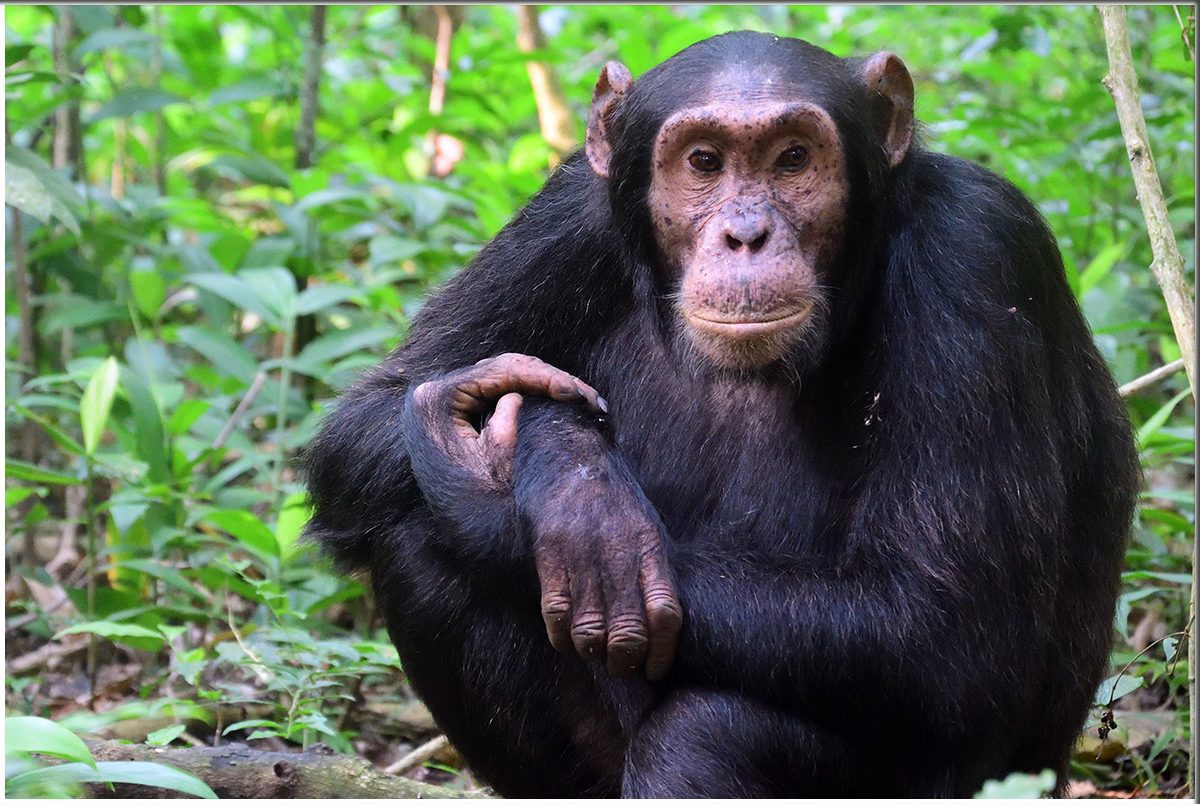 Chimpanzees are one of the most intriguing primates on earth. They are very intelligent compared to even the larger gorillas. Chimpanzees can be tracked at the Kyambura Gorge of Queen Elizabeth National Park. The Kyambura gorge is a depression/valley in the western section of the park that was created by the strong waters of river Kyambura.
Chimpanzees are one of the most intriguing primates on earth. They are very intelligent compared to even the larger gorillas. Chimpanzees can be tracked at the Kyambura Gorge of Queen Elizabeth National Park. The Kyambura gorge is a depression/valley in the western section of the park that was created by the strong waters of river Kyambura.
The Gorge is 16 Kilometers long, 100 meters deep and 500 meters wide. The gorge has now been covered by thick forests and water streams. This underground forest is home to several species of primates including baboons, Black-and-white Colobus and Red-tailed monkeys.
From the viewing platform above the gorge, tourists can spot many of the creatures down on the tree tops in the vast valley. Visiting the gorge is not all about primates but also an opportunity to see birds, snakes, butterflies and other water bodies. It is also an opportunity to learn about vegetation/species found nowhere else on earth.
Nature Walks at the Maramagambo Forest.
It’s fairly common for people to visit Maramagambo Forest, especially birders. To learn about forest protection and to see little crater lakes, birds, primates, and other forest critters, nature walks are offered in this enormous forest utilizing established pathways. Speaking of primates, the Maramagambo forest is home to nine different species, including chimpanzees, vervet monkeys, bush babies, red-tailed monkeys, and baboons.
A complex of caves where hundreds of bats live are accessible via one of the routes. Large rock pythons are drawn to these bats and like feeding on them. Both the bats and the pythons may be seen from a secure vantage point. Although not yet totally accustomed, the chimpanzees in Maramagambo can still be seen on lengthy treks into the heart of the jungle.
Visiting the Lake Katwe Salt Mines:
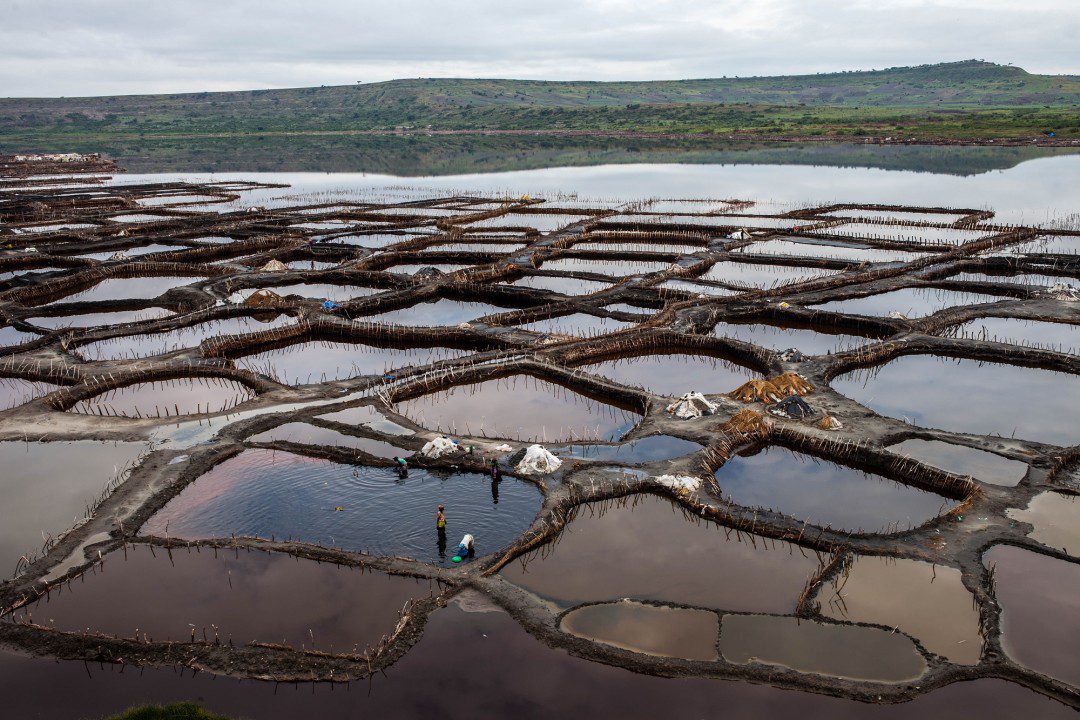 In East Africa, Lake Katwe is one of the few salt lakes. Because of the excessive salinity, there is no wildlife in the lake. Since ancient times, salt has been mined in Katwe. Prior to the discovery of other supplies and techniques of mining, salt mining was immensely profitable.
In East Africa, Lake Katwe is one of the few salt lakes. Because of the excessive salinity, there is no wildlife in the lake. Since ancient times, salt has been mined in Katwe. Prior to the discovery of other supplies and techniques of mining, salt mining was immensely profitable.
Lake Katwe is the source of the majority of the salt used in Ugandan houses. Despite the risks posed by the deadly saline waters, salt is nevertheless extracted traditionally by hand. Tourists can interact with the local mining community and learn about the salt mining industry by visiting the mines. The majority of the salt is sold to businesses, and the remaining portion is taken home by the miners.
Cultural Tours: Without visiting one of the native groups of people, a vacation to Africa, and specifically to Uganda, is incomplete. It is possible to visit the Kikorongo Equator Cultural Group while on a safari in Queen Elizabeth National Park in order to take part in and observe traditional dances, theater, and fire-making. Visitors can learn native art and craft techniques, such as natural fiber basket weaving, while they are with the Kikorongo Equator Cultural group.
There are several of these relics for sale at affordable costs. Following a visit to the group, the leaders can take tourists to specific families to show them how the locals build their homes from grass thatch, cook, tend to their gardens, and make household things. There are many options to engage in cultural experiences because practically every lodge and hotel organizes its own tours for its guests. The cultural Kikorongo ensemble is frequently invited to do a performance in the park lodges.
Wildlife Conservation and Research Tours: The Uganda Wildlife Authority introduced research tours to educate tourists about wildlife conservation initiatives while also allowing them up-close interactions with wildlife in response to the growing demand from wildlife enthusiasts. Lion tracking at Queen Elizabeth National Park, which is organized by the Uganda Carnivore Program in close coordination with the Uganda Wildlife Authority, is one of the most well-liked activities.
The big cats are tracked throughout this activity by radio collars that are placed around their necks. Tourists observe as scientists and park employees tend to the cats and keep tabs on their whereabouts. Other cats, such as leopards and hyenas, can also be seen while the animals are being tracked. Only a select few people are permitted to monitor the lions each day, therefore reservations must be made in advance. The Mweya peninsula offers mongoose tracking in addition to lion viewing.
Hot Air Balloon Rides Queen Elizabeth National Park
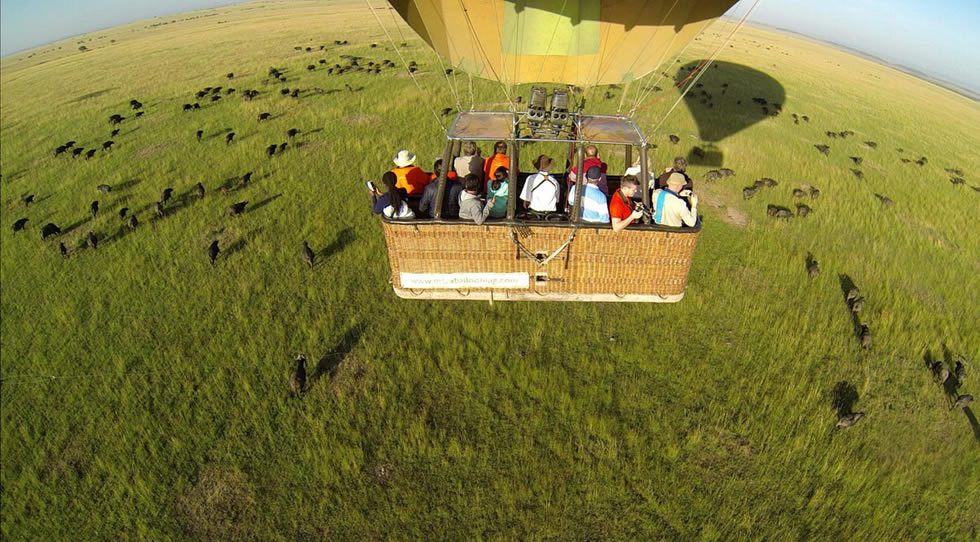 The idea for hot air balloon safaris came from the Murchison Falls National Park recently. At the park’s Kasenyi gate, the action begins very early in the morning with a briefing. The ride offers wonderful overhead views of all the park’s animals as well as fantastic opportunity to capture beautiful aerial photographs of the park.
The idea for hot air balloon safaris came from the Murchison Falls National Park recently. At the park’s Kasenyi gate, the action begins very early in the morning with a briefing. The ride offers wonderful overhead views of all the park’s animals as well as fantastic opportunity to capture beautiful aerial photographs of the park.
Accommodation in Queen Elizabeth National Park
There are several different lodges and hotels for visitors to Queen Elizabeth National Park to pick from. The lodges provide services of various quality levels, including budget, midrange, and ultra-luxury. Let’s look at some of the accommodation facilities listed below in more detail;
Ishasha Wilderness Camp:
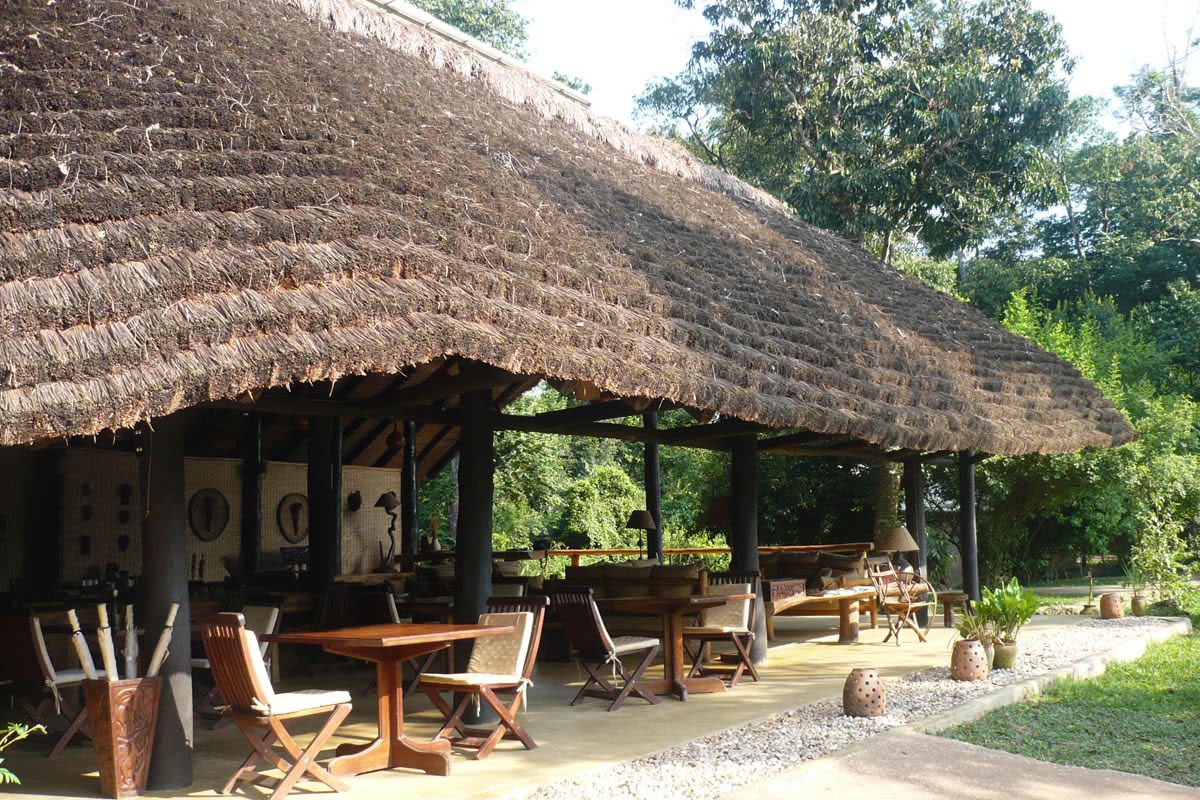 This hotel is situated along the banks of the River Ntungwe, close to the Ishasha area. The lodge’s structure and chambers are made of stones and wood, with grass roofs. The lodge’s sitting area has comfy hardwood furniture and a nice view of the river nearby. The lodge contains a restaurant, a bar, a fireplace, and a gift shop.
This hotel is situated along the banks of the River Ntungwe, close to the Ishasha area. The lodge’s structure and chambers are made of stones and wood, with grass roofs. The lodge’s sitting area has comfy hardwood furniture and a nice view of the river nearby. The lodge contains a restaurant, a bar, a fireplace, and a gift shop.
The 10 self-contained tent rooms each offer a verandah, double or twin beds, storage space, a desk, table, and carpet, as well as free WiFi. The resort offers opportunities to see some of the park’s inhabitants, including elephants, baboons, warthogs, and antelopes that congregate nearby for feeding.
Katara Lodge:
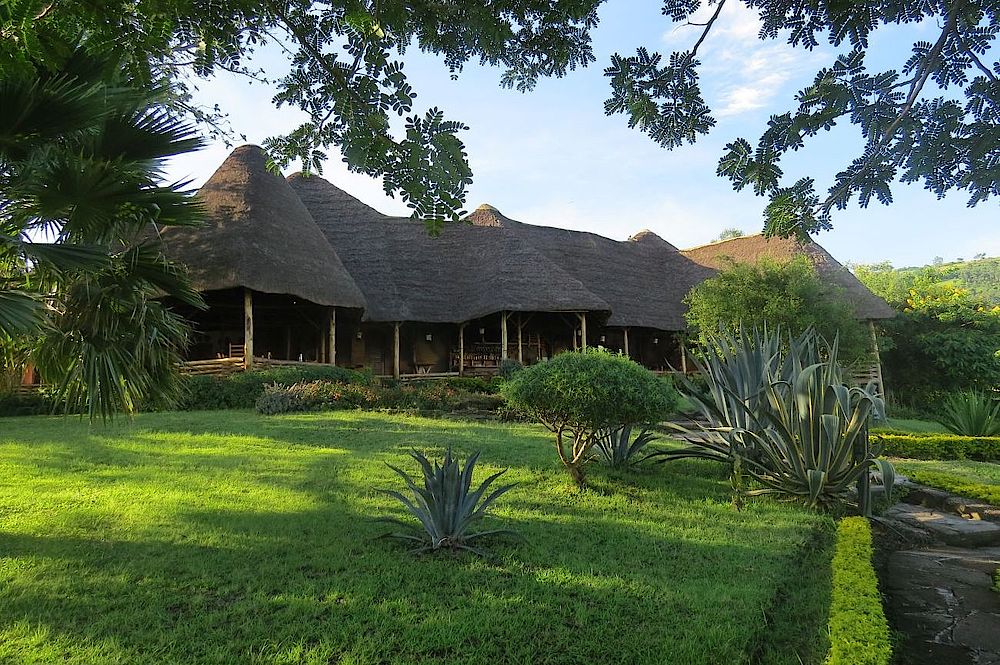 This lodge is situated close to the Katara village and the Katunguru park entrance. Beautiful gardens surround the resort, which also contains grass-covered structures called bandas. The lodge offers a bar, restaurant, lounge area with nice chairs and tables, and a pool.
This lodge is situated close to the Katara village and the Katunguru park entrance. Beautiful gardens surround the resort, which also contains grass-covered structures called bandas. The lodge offers a bar, restaurant, lounge area with nice chairs and tables, and a pool.
The rooms have a large bedroom, a table, a chair, a flush toilet, showers, bathtubs, and a private verandah. The breathtaking views of the park, Lake Edward, the Virunga, and Rwenzori Mountain ranges are only one of the things that set the lodge apart. While offering the impression of being at home away from home, the service quality is equally excellent.
Kyambura Gorge Lodge:
This lodge offers stunning views of the park and the Rwenzori Mountains and is near to the Kyambura Gorge. The lodge is ideal for vacationers who value privacy, especially newlyweds. The eight bandas are completely self-contained, equipped with flush toilets, showers, double or twin beds, lighting, mosquito netting, and Wi-Fi. The unusual gorge and primates like baboons and chimpanzees may be seen at Kyambura Gorge Lodge, which is perfect for those who adore primates.
Mweya Safari Lodge Queen Elizabeth National Park
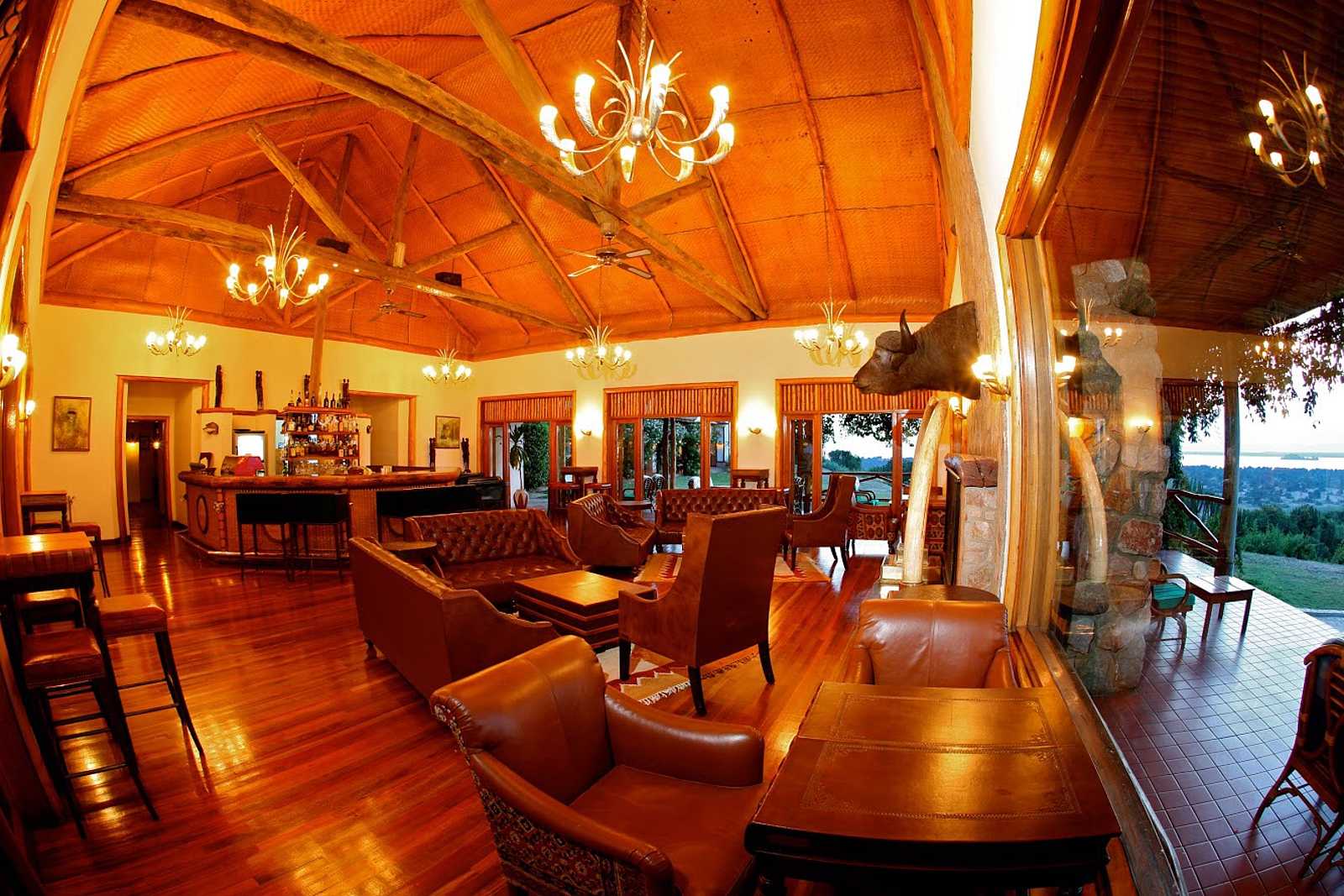 This opulent lodge was constructed in an ideal spot with a view of the magnificent Kazinga Channel. Up to 4 adults can stay in the lodge’s double or twin rooms. The air-conditioned, luxury rooms include huge beds and are completely self-contained.
This opulent lodge was constructed in an ideal spot with a view of the magnificent Kazinga Channel. Up to 4 adults can stay in the lodge’s double or twin rooms. The air-conditioned, luxury rooms include huge beds and are completely self-contained.
The lodge also contains a restaurant, a bar, and an upscale swimming pool. For those who want a more private boat trip without the crowds on the public/government boat, Mweya safari lodge conducts boat cruises to the Kazinga channel using its own fleet of boats.
Queen Elizabeth Bush Lodge Queen Elizabeth National Park
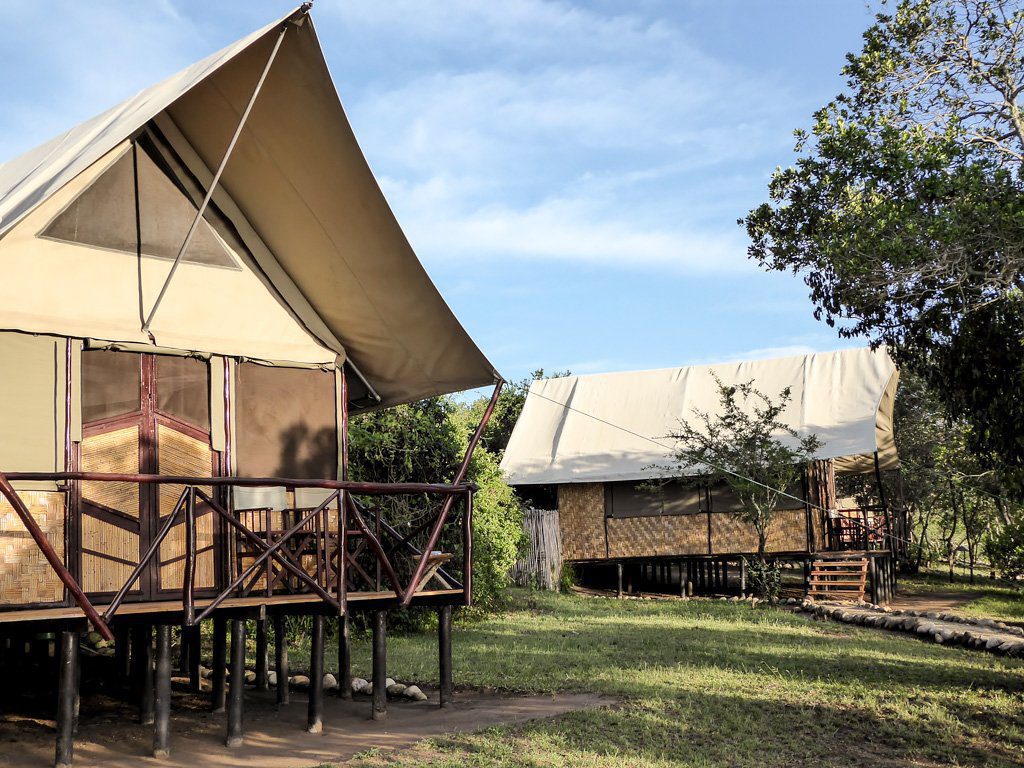 The lodge is situated off the Mbarara to Kasese road in the center of the park, close to the Mweya and Kasenyi regions. Ten self-contained rooms with eco-friendly showers and toilets built of local materials are available at the lodge. The Nature group of Lodges is in charge of Queen Elizabeth Bush Lodge, which is appropriate for those who are going on a wildlife drive in the Kasenyi region or chimpanzee tracking in Kyambura Gorge. Many park creatures, like the curious baboons, may be seen by residents from the luxury of their hotel verandas.
The lodge is situated off the Mbarara to Kasese road in the center of the park, close to the Mweya and Kasenyi regions. Ten self-contained rooms with eco-friendly showers and toilets built of local materials are available at the lodge. The Nature group of Lodges is in charge of Queen Elizabeth Bush Lodge, which is appropriate for those who are going on a wildlife drive in the Kasenyi region or chimpanzee tracking in Kyambura Gorge. Many park creatures, like the curious baboons, may be seen by residents from the luxury of their hotel verandas.
Jacana Safari Lodge:
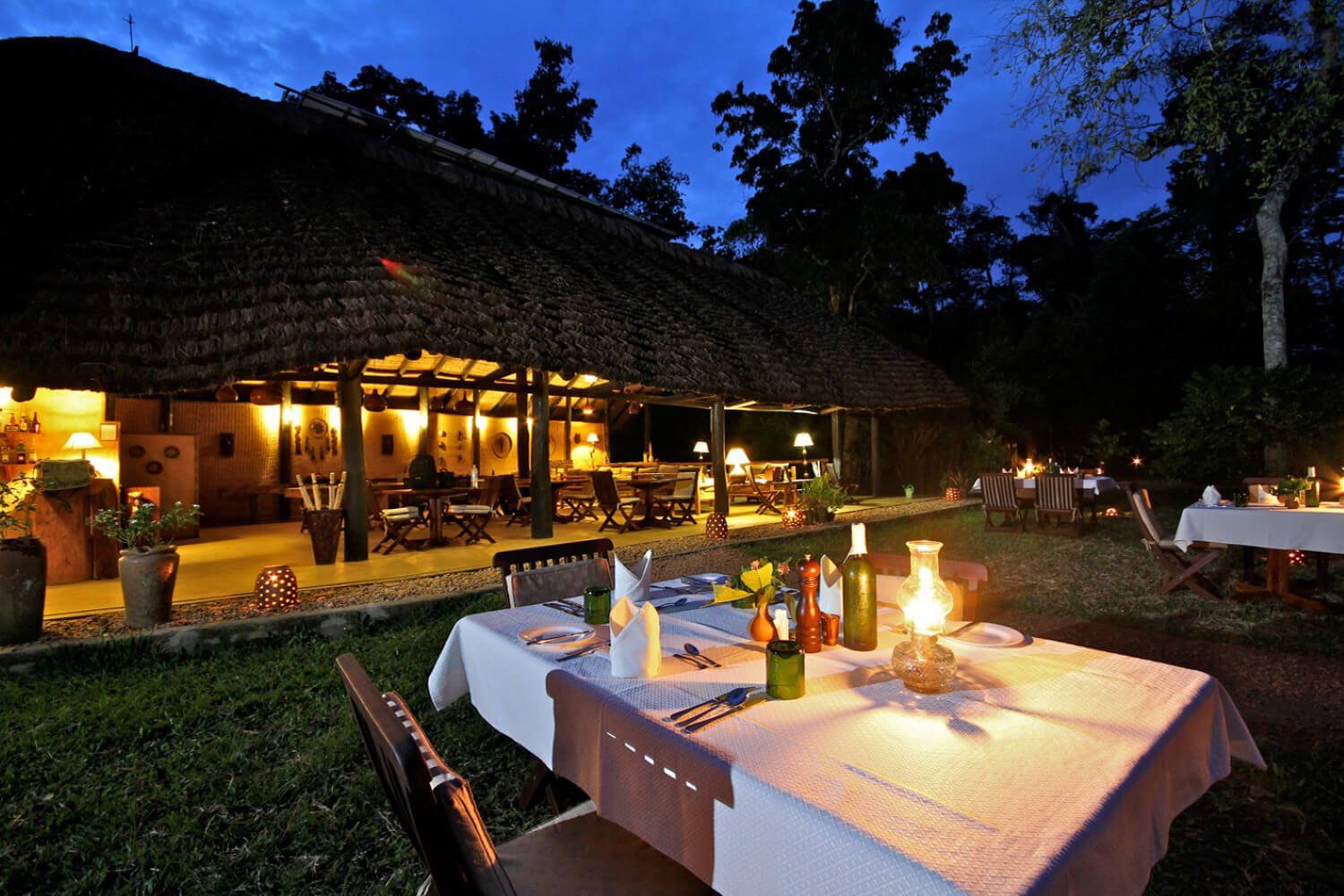 Near the Maramagambo forest along the Mbarara to Katunguru route, the Jacana Safari Lodge is situated on the shores of a crater lake. The lodge provides the ideal setting for unwinding and getting lost in the African savannah. While camping is not permitted within the resort, it is permitted close by at the research station. One must have their own camping supplies, including food and tents.
Near the Maramagambo forest along the Mbarara to Katunguru route, the Jacana Safari Lodge is situated on the shores of a crater lake. The lodge provides the ideal setting for unwinding and getting lost in the African savannah. While camping is not permitted within the resort, it is permitted close by at the research station. One must have their own camping supplies, including food and tents.
Hippo Hill Camp:
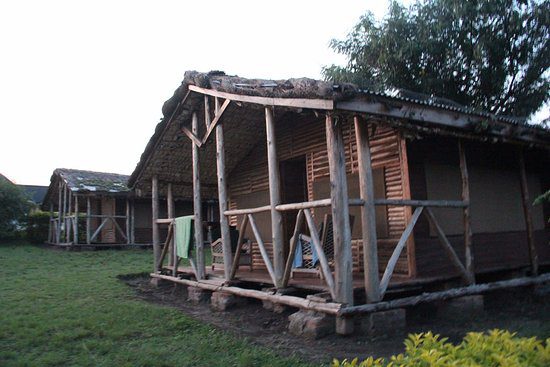 This luxury facility is built on a hill at boundary between the park and Katwe. The facility also provides beautiful views of the crater lakes Edward and Munyanyange. In addition to that, it has ten self-contained opulent tents with comfortable beds, toilets and also hot showers. There is also a bar & restaurant which serve local and foreign dishes to the visitors.
This luxury facility is built on a hill at boundary between the park and Katwe. The facility also provides beautiful views of the crater lakes Edward and Munyanyange. In addition to that, it has ten self-contained opulent tents with comfortable beds, toilets and also hot showers. There is also a bar & restaurant which serve local and foreign dishes to the visitors.

